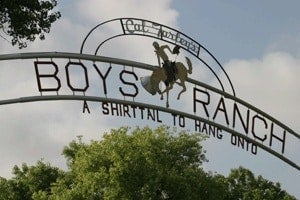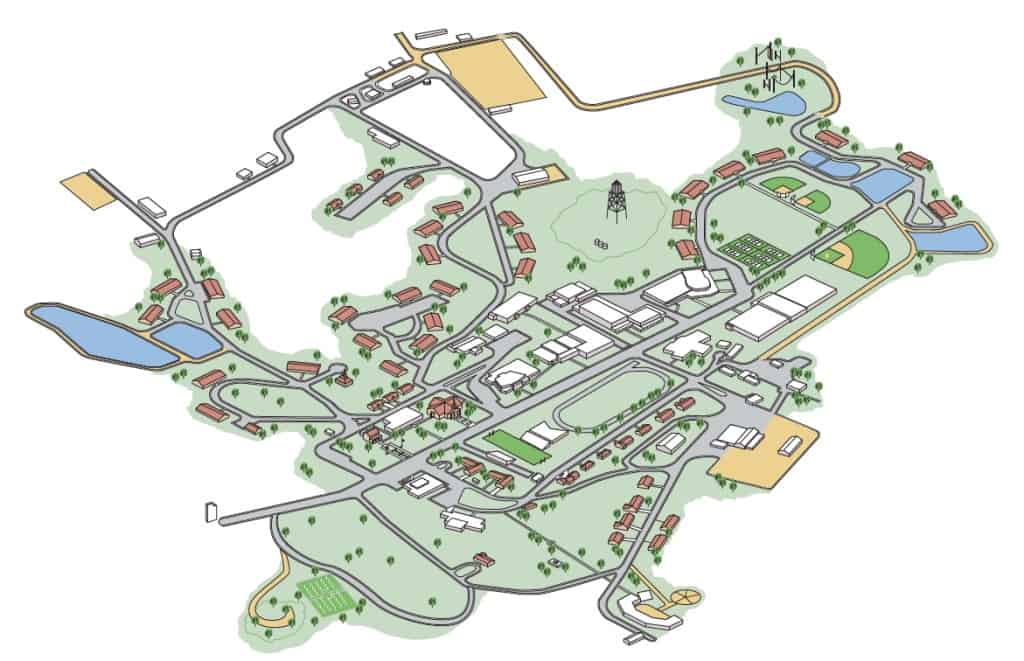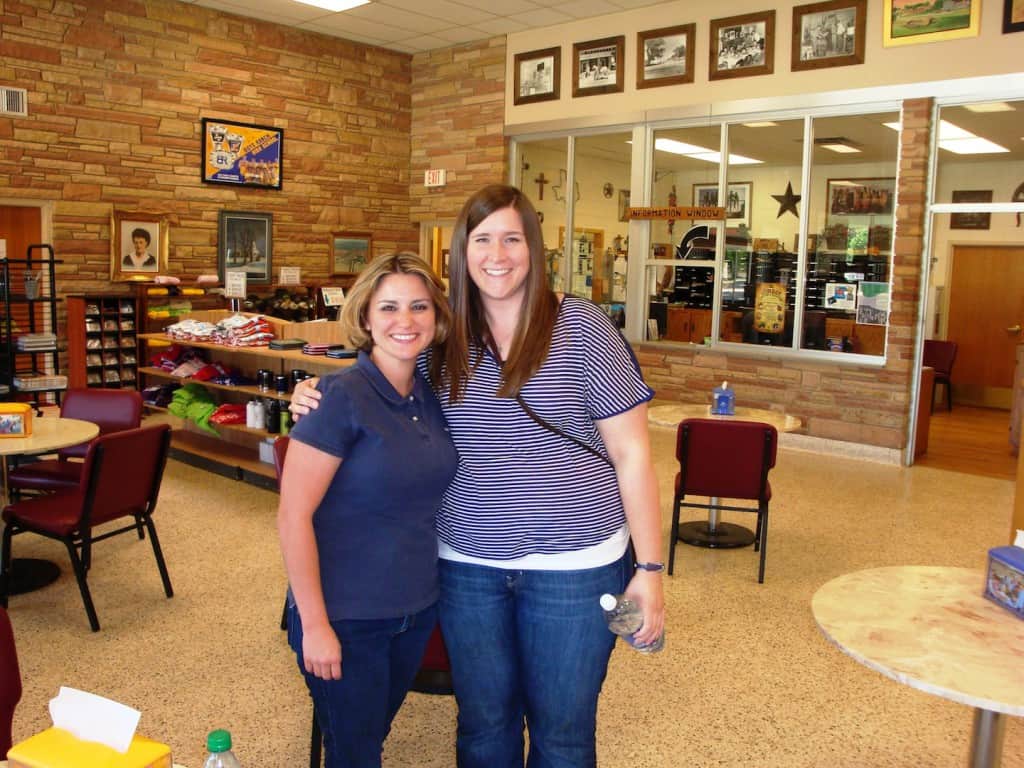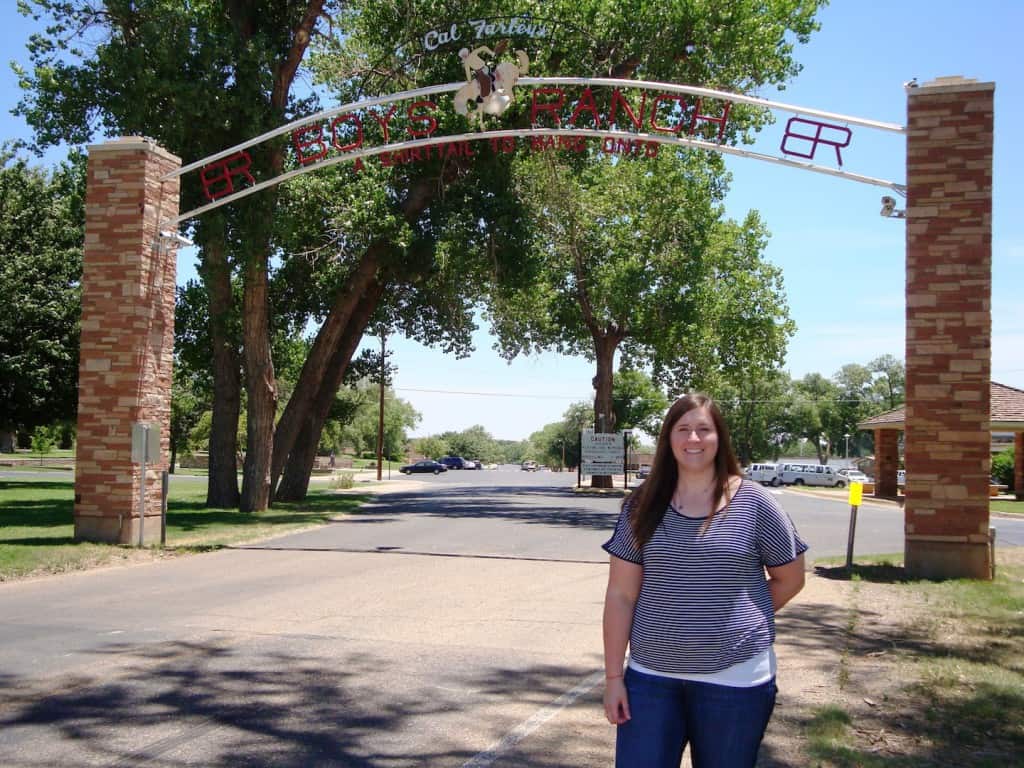 During orientation at her field placement in spring 2013, Carol Robertson was quite busy learning her way through a huge ranch and meeting all the people living there.
During orientation at her field placement in spring 2013, Carol Robertson was quite busy learning her way through a huge ranch and meeting all the people living there.
“It felt like stepping into another world,” said Robertson, who was then completing her Master’s at the The University of Texas at Austin School of Social Work. “I was on a ranch forty miles outside of Amarillo… very different from being in Austin, in all the good ways. Being away from the city allows for a great experience of connecting with the people, the kids, and the amazing and rich history of the ranch.”
Robertson’s field placement was at Cal Farley’s Boys Ranch, a modern community of boys and girls from pre-school through high school who live in group homes with house parents and a supportive community.
The ranch is part of Cal Farley’s, one of America’s largest privately funded child and family service providers. In addition to residential or campus-based services, Cal Farley’s provides educational programs for the children and families on the campuses, and community-based services in five cities throughout Texas.
In 2003, thanks to the leadership of Dan Adams, Cal Farley’s CEO and an alumnus of the School of Social Work, and Kathy Armenta, Clinical Professor and Field Liaison, the School began to offer clinical field internships for master’s level social work students at Cal Farley’s.
“Through these internships, Cal Farley’s benefits from the latest insights in social work practice, research methods, and new ideas,” said Adams. “And field students benefit from an extraordinary experience in a unique and dynamic environment. The end result is a powerful exchange where everyone involved comes away stronger and better.”
The internship at Cal Farley’s offer a generous stipend to students, in-depth clinical training in a residential setting, and the unique experience of being embedded in the ranch.

“The ranch is like a self-contained community in the middle of the canyon,” described Robertson. “So there are people who do maintenance, the butcher because they process their own cattle, a country store and grocery store where families can get supplies and food; elementary, middle, and high schools; kitchen gardens where they grow fruit, veggies, and flowers; the ranch side of things including horse and cattle herds… they even have their own fire fighter crew!”
Interns provide individual counseling to kids, and are also assigned to work with one of the group homes.
“The fact that interns are embedded in the ranch means that therapy is happening all the time, not only during sessions. It is happening whether they are bringing kids to a rodeo, participating in outdoor adventure activities, going fishing, or riding horses,” said Armenta. “Interns don’t go home after 5pm, home is there. The ranch is a therapeutic milieu, where they learn specific evidence-based skills in a unique kind of way.”
The internship starts with a three-week orientation during which students get introduced to ranch life and receive training in the specific skills they need to work with the children.
“They use a really amazing therapeutic model called NMT, which stands for Neurosequencial Model of Therapeutics,” explained Robertson. “It was developed by Dr. Bruce Perry at the Child Trauma Academy in Houston, and the ranch uses this model in a holistic way, from the house parents to the counselors and teachers to anyone working with the kids. So you get this great training that allows you to implement the model effectively in your sessions with the kids.”

As for ranch life, Robertson loved it.
“My favorite activity was the Rhythmic Riding Group, a group of therapeutic horse-riding based on NMT theory,” she said. “I got to ride with the kids, and just watching them connect with their horses and with the group was a pretty phenomenal experience.”
Many MSSW students value their field placement at Cal Farley’s so much that they want to stay after their internship ends.
Tiffany Carpenter is one of those cases. She was the first master’s student placed at the ranch, and after finishing her degree in 2006, she was hired as a case manager. Carpenter is now Clinical Intervention Specialist and Social Work Consultant, and also serves as Field Instructor for the students placed at the ranch.
“You get to be part of an amazingly inspiring community of people who truly care about the kids,” said Carpenter. “Although the organization is big, it feels small because everyone is so supportive.”
In spring 2013, the Texas Exes Amarillo chapter honored the partnership between Cal Farley’s and the School by hosting an event at the Amarillo Club.
Texas Exes chapter president Bob Juba, Cal Farley’s CEO Dan Adams, and Dean Luis Zayas highlighted the mutual benefits of the partnership and the value that School interns bring to the Amarillo area.
The event also included a presentation by Carpenter, who spoke to the audience about her experience as an intern. “Anyone who knows about Cal Farley’s understands why it is such an important place: because it is all about the kids,” she concluded.
By Andrea Campetella – Posted January 7, 2014


